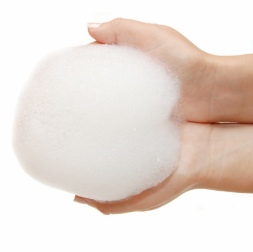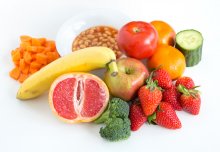

Chemical engineers and mathematicians from Imperial have created a new model that more accurately describes the motion of soft matter particles.
Ben Goddard, a research associate who works with Professor Serafim Kalliadasis in the Department of Chemical Engineering, sat down to talk about soft matter materials, such as paints and sponges, and how their model can be applied in fields ranging from nanotechnology to environmental science.
What is soft matter?
Soft matter is a broad term that can describe many different materials. Scientifically, a soft matter material is one that external forces, like gravity or pressure, can deform at room temperature.
Can you give some everyday examples of materials that are considered soft matter?
Soft matter examples exist all around you. Common examples include blood, shampoo, ink and cosmetics items such as liquid foundation and mascara. Other examples include liquid crystals in LCD televisions, sand, even clouds.

Shampoo is an example of soft matter
What specific research have you and your team been working on with soft matter?
Our main research goal has been to use elements of what is called dynamical density functional theory to develop a computer model that is more accurate and efficient at describing the movement of soft matter particles at the microscopic and macroscopic levels.
What are some real-world applications that are possible from your research and your model?
From medicine to food storage to electrical engineering, this model has a home in just about every field of science. An example that utilizes our model in biology could be drug delivery nanoparticles that could improve treatments for patients.
The model we’ve developed could be used to better describe how ink droplets from printers spread out on paper. Printers could be improved to reduce the amount of ink they use and the quality of their printing could be increased if we knew exactly how ink expands once it hits the page.
Now that you’ve created this model, is your research complete? If not, where is your research going from here?
No, we’re not finished just because we’ve formulated this model. One part of our on-going research would be to use this model to validate or invalidate existing models in other fields, such as fluid mechanic models that describe the motion of clusters of droplets. On the purely theoretical front, there are many fundamental questions we want to address using our model. As an example, we are particularly interested in instabilities, or changes, that occur when we mix two or more fluids and how the microscopic details of the fluids affect this mixing. This research can also be extended to enable us to more intimately describe a wide range of phenomena from the formation of galaxies to the formation of waves by wind blowing over water. We will also look at instabilities in the layering and orientation of soft matter with nematic properties, such as liquid crystals in LCD displays. This is a particularly exciting aspect to our research because scientists’ understanding of these sorts of problems is limited.
References
B D Goddard et al. “Unification of dynamic density functional theory for colloidal fluids to include inertia and hydrodynamic interactions: derivation and numerical experiments.” Journal of Physics: Condensed Matter (2013) http://iopscience.iop.org/0953-8984/25/3/035101/
B D Goddard et al. “General Dynamical Density Functional Theory for Classical Fluids.” Physical Review Letters" (2012) http://link.aps.org/doi/10.1103/PhysRevLett.109.120603
Article text (excluding photos or graphics) available under an Attribution-NonCommercial-ShareAlike Creative Commons license.
Photos and graphics subject to third party copyright used with permission or © Imperial College London.
Reporter
Rosemary Peters
Department of Humanities

Contact details
Email: press.office@imperial.ac.uk
Show all stories by this author



